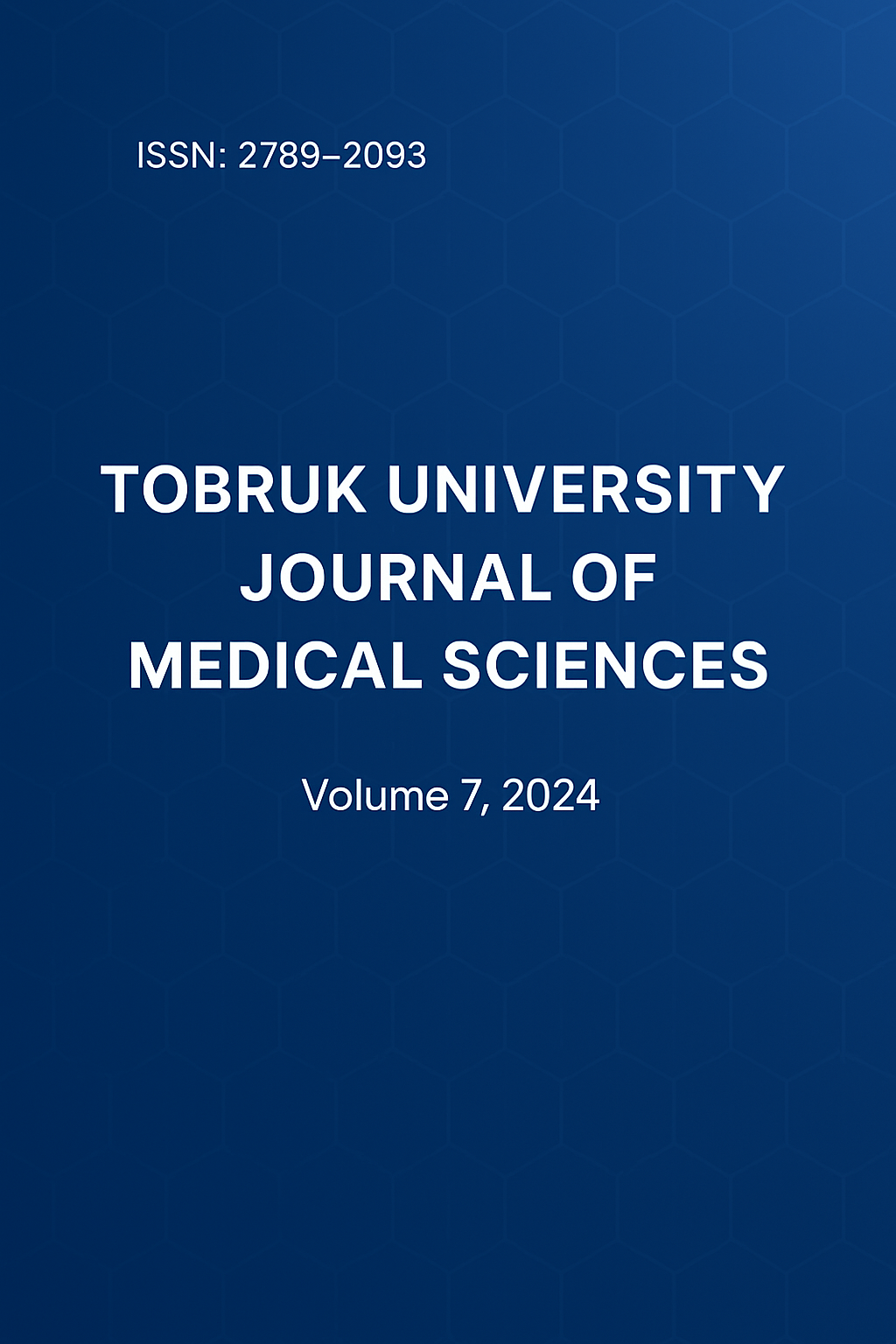The incidence of children’s eye injuries in Tobruk: a prospective study.
DOI:
https://doi.org/10.64516/5pnqkd30Keywords:
Ocular trauma, Open globe injuries, Closed globe injuries, Tobruk medical center-Libya.Abstract
Introduction: Ocular trauma constitutes a significant cause of acquired blindness in the pediatric population. Understanding the epidemiology of ocular trauma in children, particularly in comparison to other age groups, is vital for informing preventive measures and healthcare planning. This study aims to investigate the prevalence and characteristics of ocular trauma cases seen at the Tobruk Medical Centre in Libya over the course of one year. Methods: A retrospective study was conducted in 2019, encompassing patients of all age groups who were presented with ocular trauma in both the Ophthalmology Department and the Emergency Department of Tobruk Medical Centre. Data pertaining to age, sex distribution, duration of presentation, mode of injury, type of injury, and final visual outcomes were analyzed. Results: Among the 201 patients included in the study, 76 were children, comprising 37.8% of the total cases. Of the pediatric cases, 68.5% were male, while 31.5% were female. Notably, a significant proportion of children (77.6%) suffered ocular injuries at home, with altercations accounting for 7.8%, school-related incidents at 6.5%, and car accidents and workplace accidents contributing 5.2% and 2.6% respectively. Approximately 29% of cases required hospital admission, with 22% of patients necessitating surgical interventions. Blunt trauma was the most frequent type of ocular injury, representing 72% of cases. Penetrating trauma with intraocular foreign bodies (IOFB) accounted for 6.5% of cases. The final visual outcomes were recorded for 16 patients. Alarming results showed that 8% experienced severe vision impairment, with a visual acuity of Hand Movement or worse. Additionally, 2.6% of the trauma cases resulted in blindness with no perception of light. Sever impairment of vision is statistically significant related to cases with open rupture globe (P < 0.001). Conclusion: This study highlights the substantial vulnerability of children to ocular trauma and underscores the need for increased supervision and preventive measures, particularly in the home environment. Notably, open globe injuries can lead to permanent blindness. Preventive efforts should include the secure storage of sharp objects to safeguard against pediatric ocular trauma and its potentially devastating consequences.
References
1. Alem KD, Arega DD, Weldegiorgis ST, Agaje BG, Tigneh EG (2019) Profile of ocular trauma in patients presenting to the department of ophthalmology at Hawassa University: Retrospective study. PLoS ONE 14(3): e0213893. doi:10.1371 /journal. pone.0213893
2. Barry RJ, Sii F, Bruynseels A, Abbott J, Blanch RJ, MacEwen CJ, Shah P. The UK Paediatric Ocular Trauma Study 3 (POTS3): clinical features and initial management of injuries. Clin Ophthalmol. 2019; 13:1165-1172
3. Beshay N, Keay L, Dunn H, Kamalden TA, Hoskin AK, Watson SL. The epidemiology of open Glob injuries presenting to a tertiary referral eye hospital in Australia. injury 2017 doi. 10.1016/j. injury2017.04.035.
4. Cassen JH. Ocular trauma. Hawaii Med J. 1997 Oct;56(10):292-4. PMID: 9385749.Oct
5. Guly CM, Guly HR, Bouamra O, Gray RH, Lecky FE. Ocular injuries in patients with major trauma. Emerg Med J. 2006 Dec;23(12):915-7.
6. 6. Malik, Zeshan Ali, A. Rehman, Muhammad Moin, Mumtaz Hussain. Epidemiology of Penetrating Ocular Trauma Irfan Qayyum Pak J Ophthalmol 2012, Vol. 28 No.
7. MacEwen, CJ. Et al. Eye injuries in children: the current picture. Br J Ophthalmol. 1999;83:933-936
8. Morris, D., Willis, S., Minassian, D. et al. The incidence of serious eye injury in Scotland: a prospective study. Eye 28, 34–40 (2014).
9. Puodžiuvienė, E., Jokūbauskienė, G., Vieversytė, M. et al. A five-year retrospective study of the epidemiological characteristics and visual outcomes of pediatric ocular trauma. BMC Ophthalmol 18, 10 (2018).
10. Sahraravand, A., Haavisto, AK., Puska, P. et al. Work tool-related eye injuries: Helsinki Ocular Trauma Study. Int Ophthalmol 40, 753–761 (2020).
11. Sujit Das1, Manika Rana2 Patterns of Ocular Trauma Presenting to the Tertiary Eye Care Centre in the Islands of Andaman and Nicobar. Delhi journal of ophthalmology 2020
12. Velibanti Nhlanhla Sukati: Ocular injuries - a review December 2012, the epidemiologyof ocular trauma presented to Provincial hospital South Africa.
Downloads
Published
Issue
Section
License
Copyright (c) 2025 Fathy Abdolmejed, Ensaf Abaza, Khalid Almajri, Gumma Almusmari (Author)

This work is licensed under a Creative Commons Attribution 4.0 International License.











